Negative Space: How to Add Something with Nothing
![]()
Negative space is a powerful concept in art and photography that allows you to say a lot with very little. In this article, we will look at the basics of negative space and how you can use it as a tool for creative and powerful photo compositions.
What is Negative Space?
Negative space is the empty space around and between the subject(s) in a composition that does not draw a viewer’s attention. This is space that is intentionally left devoid of “interestingness” in which the eye is not able to hold onto a subject or an element.
This “empty” space both creates increased attention on the main subject as well as allows the viewer’s eyes to wander around the frame, providing calmness rather than busyness.
It’s up to the photographer to decide how they use negative space to talk visually about the interplay between the subject and their surroundings.
Negative space is a powerful medium to use nothing to make something. The space allows the subject to have breathing room. It declutters the photograph especially if you have competing elements in your image. It emphasizes and defines the main subject or the main element of a photo.

Negative space is an age-old concept in visual art, with widespread use in everything from paintings to graphic design to photography. Many examples of negative space can be found in the works of some legendary photographers such as Ansel Adams and Henri Cartier-Bresson.
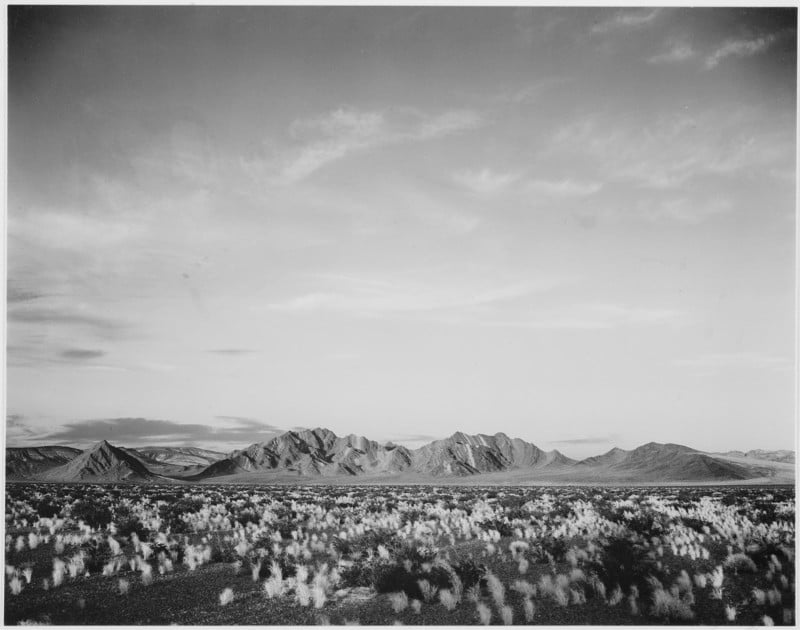
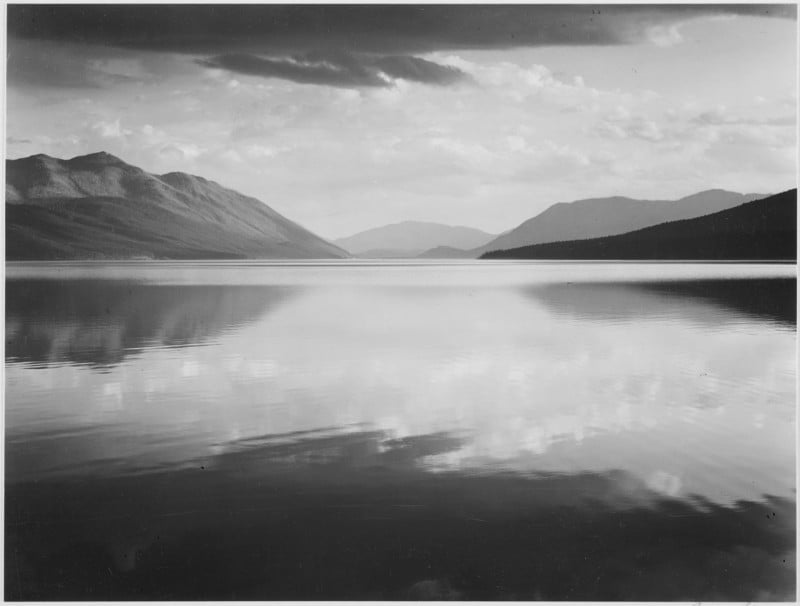
How and When to Use Negative Space
Deciding if and when to use negative space in a photo is an artistic decision and completely dependent on the photographer. It is a tool you can use to:
- Provide “breathing room” and a place for a viewer’s eyes to rest.
- Add a sense of size and scale, whether smallness or vastness.
- Convey emotions such as calmness, loneliness, sadness, hope, etc.
- Draw attention to a particular subject (or subjects).
- Allow the viewer room to follow where a subject is looking.
- Create a subject out of creative empty space.
Negative Space in a Subject’s Gaze
Negative space is not just used to show openness or convey emptiness, especially in landscape photos, but it’s also used to add depth and gazing space in portraits especially if the person is looking to their side instead of directly at the camera. Here is a pair of portraits that showcase this effect.

In this first portrait, the subject is looking towards camera left and the viewer’s eyes generally try to follow the gaze of the subject. But since we do not have enough space toward the left the viewer’s eyes abruptly cuts off and this creates tension in the image.
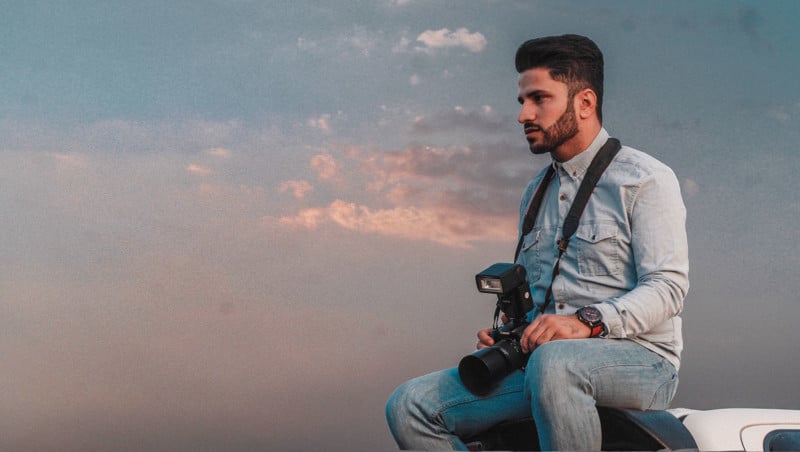
On the other hand, in this second photo/crop, the viewer’s eyes get enough space to wander through the image and follow the gaze of the subject.
If you would have considered only one “rule” of photography, such as to fill the frame with the subject, then you would say the first image is more “correct,” but again there are certain rules that take precedence over the other. Knowing the intricacies of when to follow certain rules and when to break them can help take your photography composition to the next level.
Creating Negative Space Artificially
It’s not necessary that you add or budget for negative space while taking the photograph on location. It sometimes strikes you while you are in the post-production stage.
To give you an example, consider this photo which I took a few years back while I was hiking up a hill for sunrise. I spotted a leafless tree on the side of the trail and it was being backlit by the morning sun. The added fog created a bit of an atmosphere and the branches of the deciduous tree were making an abstract pattern, so I pulled out my camera (dialed down my shutter speed to get a silhouette) and got a shot of it.
![]()
The image looked good at the back of the camera screen and during editing, I thought the image looked just ‘ok’. So I started experimenting with the image — changing the white balance, removing a few elements like jutting out branches, etc. Then I thought, “let’s test out negative space.” The monotone orange color of the sky in the background helped with this decision.
I exported the image into Photoshop, expanded the canvas, and used Content-Aware Fill to add negative space on the top right side of the image. The total image size ballooned from just about 24 MP to almost 80 MP. Here’s the final image:
![]()
So as you can see by adding “nothing” to the image the entire composition changed. It conveys the loneliness of the tree in the vast landscape. Adding the negative space makes the minimalist photograph look aesthetically pleasing. This altered photo, in my opinion, would look better as a framed print on a wall than the original shot.
This isn’t a “truthful” photo, of course, and many may have an issue with “adding” negative space in this artificial way. Nevertheless, it’s an illustration of what negative space can do in the way of “adding more with less” in the composition. The easier way to achieve this benefit of negative space is simply to create it with your framing when you are actually capturing the photo.
Using a Shallow Depth of Field
If a subject’s surroundings are far from empty and the background is filled with distracting elements, using a shallow depth of field to throw your background out of focus can be a way to add pleasant negative space.

Using Light and Shadows
Negative space can also be created in a busy scene using light and shadows and a camera’s limited dynamic range. A man walking on a busy street in a large city can be photographed with plenty of negative space by exposing for a patch of light and crushing the shadows into solid black.
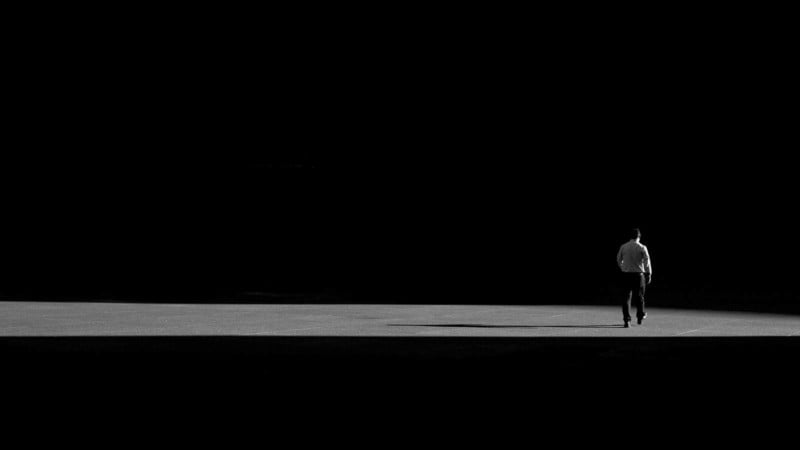
Negative Space as a Subject
Creatively composed negative space can be a subject in itself. When the negative space forms a unique and artistic shape, it can be the main subject that a viewer’s gaze is drawn to.
![]()
In this photograph, while a canyon might ordinarily be the main subject in a landscape photo and the starry sky the backdrop, the shape of the windy canyon opening causes the night sky to become the main subject — it almost looks like a glittering river winding its way through a rocky channel.
Sometimes negative space in art, design, and photography can be more subject and less easily noticeable at first glance. In the area of design, FedEx’s logo famously has an arrow in the negative space between the ‘E’ and the ‘x’.
![]()
Posters for the film The Dark Knight Rises famously used the negative space between crumbling buildings to create the shape of Batman’s symbol.

Another example of creative use of negative space in photography is a series of advertisements shot by photographer Amol Jadhav to promote pet adoption — each photo shows people with negative space between them in the shape of an animal.

While creating this type of negative space in a photo can be hard and finding it out “in the wild” can be even harder, you may be lucky enough to find instances if you look hard enough at the space between things in the world.
Negative Space vs. Filling the Frame
Negative space actually goes against a common rule of thumb in photography. If you are just getting started in photography, you may have been given the advice of “filling the frame with the subject.”
This “rule” basically boils down to saying that the subject you are trying to photograph should be dominant in the image and as a general rule of thumb should be taking up about 80% of the space. It’s correct though: viewers should be focusing on what you intended them to see and focus on in a photograph. But as with any other rule, it’s meant to be broken and you should be breaking them with a purpose. It’s an artistic choice in the end.
Photography shares similar principles with the world of design, where negative space is often employed as well. In graphic design and advertising where effective communication is key, the use of negative space can be paramount. Volkswagen’s iconic “Think Small” advertising campaign brilliantly showcases the power of negative space.
![]()
The subject is still the car but just imagine how different the impact would have been if the same car was displayed covering the entire page. Volkswagen would have paid the same amount for the advertisement in either case.
The effect of negative space also shows up in typography and thus sentences written in a mix of upper and lower case letters look more legible as compared to only capital letters. The space differs around the lower case letters, thus letting the eye distinguish every word rapidly as opposed to all caps wherein the letters are all in a similar profile.
Negative Space and the Rule of Thirds
Sometimes the rule of thirds and negative space goes hand in hand. If you try to offset the subject in the image to one side in order to accommodate for the rule of thirds, then more often than not it creates a negative space on the other side.

This is one of the reasons why the rule of thirds is a common piece of composition advice given to beginners: it is a simple way to provide breathing room and interestingness when framing a composition.
Examples of Photos with Negative Space
Here are more examples of photos that use negative space in their composition:
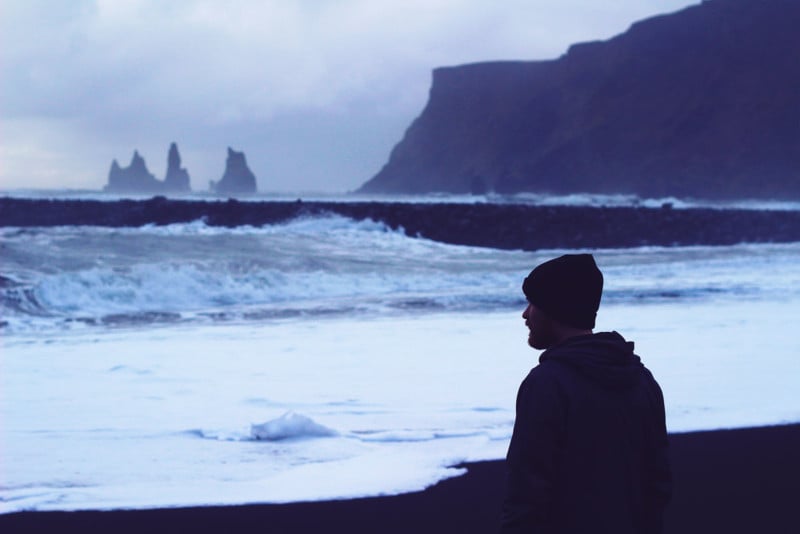
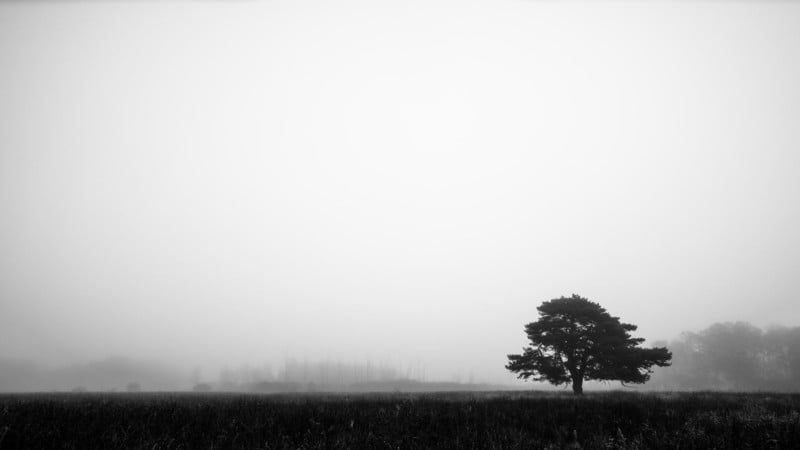
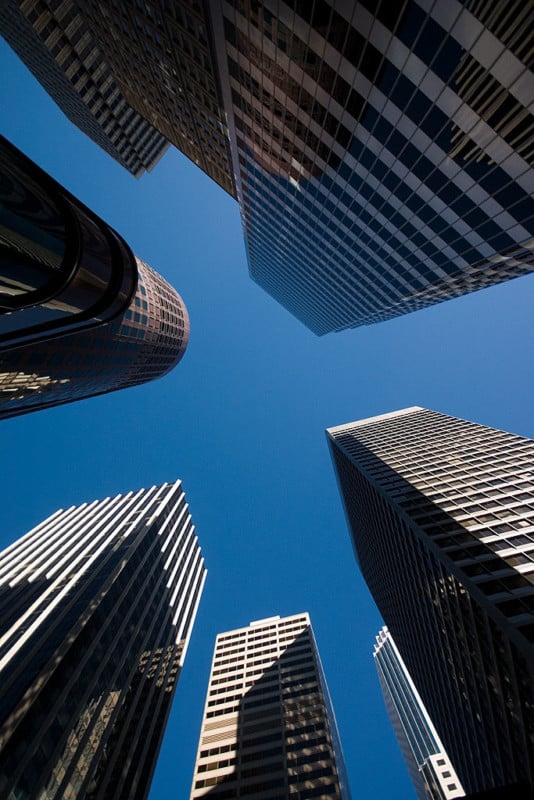
Conclusion
Negative space is a powerful concept to know and keep in mind when composing and editing photographs, and it’s a simple way to transform a mundane picture of a subject into one that is more aesthetically pleasing and visually interesting.
The next time you are framing a shot, consider what you want to communicate with your viewer and keep negative space in mind as a way to “say a lot with very little.”
Image credits: Header photo by Boris Thaser and licensed under CC BY 2.0. All other photos, unless otherwise noted, by Aditya Aashish.